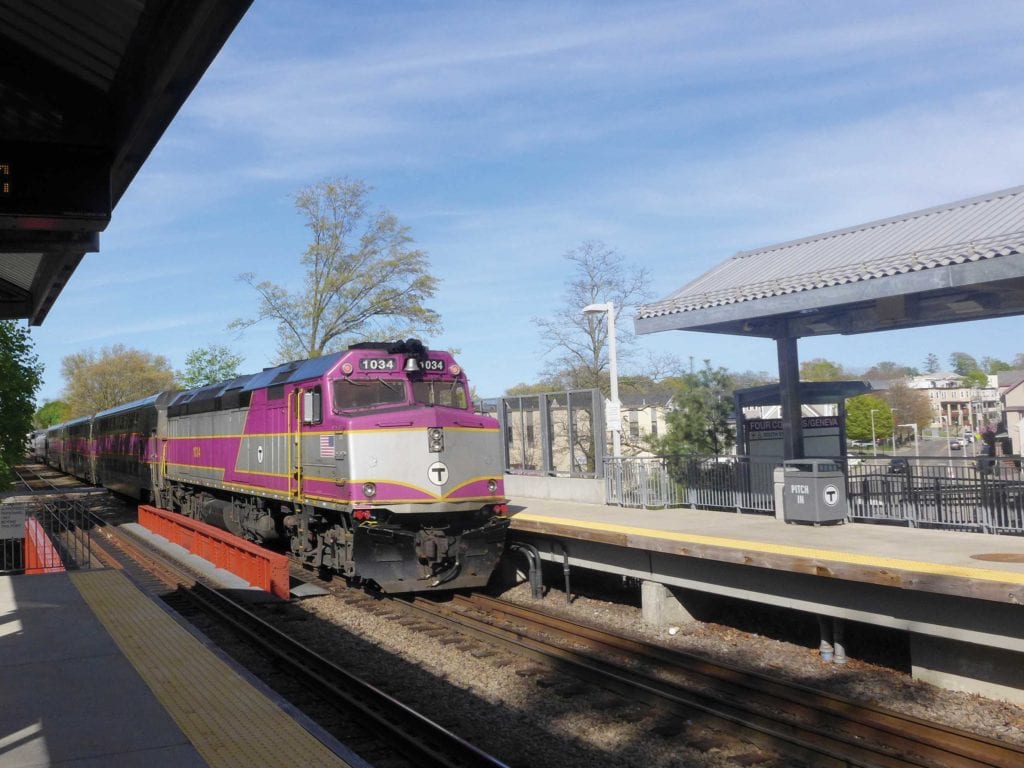
The Massachusetts Senate has passed a budget amendment authorizing full funding of a study to determine the feasibility of full electrification of the Fairmount Commuter Rail Line.
Sen. Nick Collins, who proposed the amendment, said in a statement that electrification of the line would provide residents of Hyde Park, Dorchester, Mattapan and Roxbury with more equitable access to transportation.
“All residents of Boston deserve access to clean, rapid transit, which we know breaks down barriers to economic mobility and improves public health outcomes,” Collins said. “This is a question of environmental justice and economic opportunity, and I am committed to securing that equity for all residents of the First Suffolk district.”
The MBTA’s ongoing study, known as Rail Vision, will evaluate seven different alternatives for the future of the Commuter Rail, according to MBTA spokesman Joe Pesaturo. One of those alternatives is electrification, using cars known as electric multiple units (EMUs), which are more similar to the current subway trains in use on the other MBTA lines.
EMUs would be used between inner core stations, or stations within 15 miles of downtown Boston, as well as the entire Providence Line and the new South Coast Rail Line. Longer-running lines would still use diesel trains. Electrification of the lines would make it possible to run trains with greater frequency.
“The Rail Vision process will identify the most cost-effective strategies for leveraging the MBTA’s extensive rail network to increase ridership and better meet the transportation and economic growth needs of the region,” Pesaturo said in an email. “While already a critical component of the MBTA system, the commuter rail system carries relatively few customers in off peak periods and in reverse commute directions.”
Pesaturo said the Rail Vision study must be finished by the end of the year in order to factor into the MBTA’s next operating contract.
In a previous study by the nonprofit TransitMatters, the Providence and Fairmount Lines were highlighted as routes which would especially benefit from electrification, as all but two of the Fairmount Line’s eight stations have high platforms, and the closely-spaced stations mean that service would benefit from the faster acceleration of EMUs. The line also has close connections to the Providence Line, making it easier to share electrical substations.
Currently, service along the Fairmount Line runs approximately every 40 minutes and is the most direct transit path to downtown Boston from the areas where it runs. Many riders use it in the same way as the subway, as a short trip within the city, but the infrequent service makes it difficult to rely on the line as a way to work and other appointments.
Electrification of the line would mean that trains could run much more frequently, approximately every 15 minutes.
Collins, along with Reps. Dan Cullinane and Liz Miranda in the House, has also proposed an amendment to allocate $2 million toward a two-year pilot study known as the “Indigo Line Project” to examine more frequent service on the line, with trains running every 15 minutes during peak hours and every 30 minutes during off-peak hours. That study would also test easier methods of fare payment, such as CharlieCards and CharlieTickets.
The study would begin no later than December 1, 2019.






